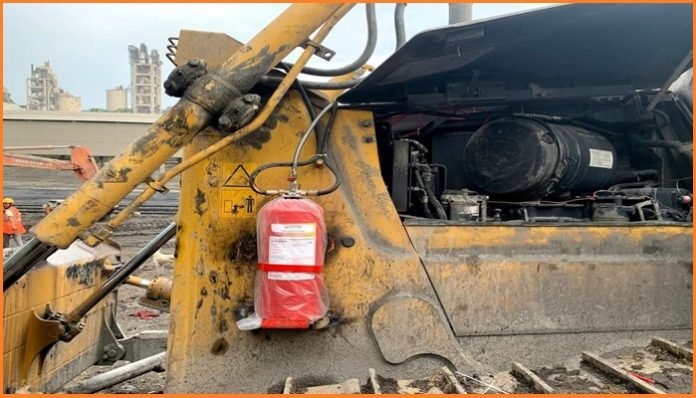In the automotive safety, one very critical aspect often overlooked is the threat of vehicular fires. The potential for fires in vehicles exists due to various factors, including engine malfunctions, electrical faults, or collisions. To address this serious concern, vehicle manufacturers and safety experts have increasingly turned to advanced technologies, with the spotlight on Vehicle Fire Suppression Systems (VFSS).
Contents
Understanding the Threat
The aftermath of a vehicle fire can be catastrophic, not only causing major damage to the vehicle but also posing a severe risk to the occupants and surrounding environment. Traditional fire extinguishers, while valuable, may not provide a timely or effective response, especially in situations where the fire rapidly escalates.
Enter Vehicle Fire Suppression Systems
VFSS is a cutting-edge safety feature designed to detect and suppress fires within a vehicle rapidly. These systems are engineered to respond swiftly and efficiently, minimizing the potential for extensive damage and, more importantly, ensuring the safety of those inside and around the vehicle.
Key Components and Mechanism
- Detection Systems: VFSS incorporates advanced detection mechanisms such as heat sensors, smoke detectors, and sometimes even flame detectors. These sensors continuously monitor the vehicle’s critical areas, instantly recognizing any abnormal temperature increases or signs of combustion.
- Suppression Agents: Once a potential fire is detected, the system activates a suppression mechanism. Common suppression agents include clean agents like HFC-227ea or FE-36, which rapidly flood the affected area, displacing oxygen and extinguishing the fire without causing damage to sensitive electronics or leaving residue.
- Activation Method: VFSS can be manually activated by the vehicle occupants or triggered automatically through the detection system. Automatic activation is particularly crucial as it ensures a swift response even if the occupants are incapacitated or unaware of the developing fire.
Benefits of Vehicle Fire Suppression Systems
- Rapid Response: VFSS acts within seconds of detecting a fire, providing a much quicker response compared to traditional firefighting methods.
- Reduced Damage: By swiftly containing and suppressing the fire, VFSS minimizes damage to the vehicle and its contents, potentially saving lives and valuable property.
- Enhanced Safety: The primary goal of VFSS is to protect occupants, and by extension, pedestrians and nearby structures, from the dangers associated with vehicular fires.

Integration into Various Vehicles
VFSS is not limited to a specific type of vehicle. Its adaptability makes it suitable for a wide range of applications, including personal cars, commercial trucks, buses, and even specialized vehicles like construction equipment or agricultural machinery.
Challenges and Future Developments
While VFSS has significantly improved vehicular safety, ongoing research focuses on making these systems even more effective and affordable. Challenges include optimizing detection algorithms, addressing false positives, and exploring eco-friendly suppression agents.
In the pursuit of automotive safety, Vehicle Fire Suppression Systems stand out as a critical innovation. As technology continues to advance, these systems will likely become standard features in vehicles, contributing to a safer and more secure transportation landscape for everyone on the road.
People also ask:
Cost of Automatic fire suppression system for vehicles?
Approx cost is INR 30000 to 100000
The cost of an automatic fire suppression system for vehicles can vary widely based on several factors, including the type of vehicle, the size of the engine compartment, the complexity of the system, and the specific features it offers. Additionally, the cost may be influenced by the brand, the quality of materials used, and whether it’s a pre-installed option or an aftermarket add-on.





